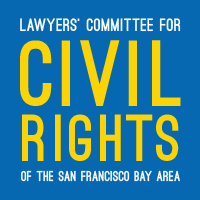What happens when SF takes homeless people’s ‘stuff’
Original article can be found in the SF Examiner
Written by Joe Fitzgerald Rodriguez
Super Bowl 50 was supposed be Mayor Ed Lee’s touchdown.
The crass, corporate pièce de résistance in downtown San Francisco known as Super Bowl City would delight family members of all ages.
Yet the streets already hosted encampments of hundreds. Those living there were not exactly ready for the NFL limelight.
Gradually pushed out by local police, homeless people landed on Division Street.
In the following weeks, thousands of locals expressed their anger as Mayor Lee’s departments swept Division Street clean of its notorious tents. The ensuing backlash shined a national spotlight on the more than 6,000 souls in The City of St. Francis without homes.
Locally, few images were as iconic — or “viral” — of those sweeps as that of a walker being crushed in a trash compactor by Public Works.
Yes, a walker.
Captured by Kelley Cutler, of the Coalition on Homelessness, the photo highlighted a frightening reality: If The City could destroy an elderly homeless person’s only means of mobility, well, they could destroy damn well anything.
Neil Taylor owned the walker. An older gentleman, Neil lives in a tent often found on Division Street. With her intimate knowledge of the community, Cutler helped me find him.
It was a sunny day last Friday as I walked under Interstate 280 looking for Neil. From the old Dolby Laboratories across Division Street, a gold glint caught my eye.
Someone had scrawled on a nearby freeway pylon, “Neil, the cops came and took everyone’s stuff, sorry.”
Just on the other side of that pylon, Neil slept in his orange and grey tent.
Neil’s face is etched with the kind of wrinkles you only get from smiling, or worrying, entirely too much. His white, bushy beard recalls Russian czars, but he’s from the state of Georgia.
When he told me his last name is Taylor, I asked how he spells it.
“Well,” he growled, “I don’t make clothes!”
Neil’s last home was an apartment in Parkmerced, where he lived with his wife of 38 years.
“I couldn’t stand the place after I found my wife [dead] there,” he said. She died of liver cancer.
He then took to the streets. That was four years ago.
Neil is a U.S. Army veteran and former machine gunner who served in Vietnam. He loves to play piano and quickly rattled off his favorite works: Rachmaninoff’s “Piano Concerto No. 2 in C minor”; Chopin’s “Prelude in E minor”; Tchaikovsky’s “No. 1 in B-flat minor.”
Public Works has only “gotten me twice,” Neil said. They crushed his walker while he was at the San Francisco VA Medical Center seeking care for a skin rash. He hurriedly scratched a blistery red mass along his arms.
His Parkinson’s makes him prone to falls. Hence, the walker.
The trash compactor in the photo crushing Neil’s walker bears a Caltrans logo, because the freeway is their jurisdiction. But Cutler saw Public Works workers load the truck that day.

A walker belonging to Neil Taylor, a homeless San Francisco resident, was crushed in a trash compactor by Public Works during the Super Bowl City sweeps earlier this year. (Courtesy Kelley Cutler)
In response to the sweeps in late February, the American Civil Liberties Union and Lawyers’ Committee for Civil Rights of the San Francisco Bay Area penned a damning letter alleging those sweeps unlawful. A lawsuit looms.
Now, On Guard has learned, the Mayor’s Office is ready to talk turkey.
“We actually just heard from the Mayor’s Office,” said Elisa Della-Piana, legal director of the lawyers’ committee, on Monday.
Lee’s office told On Guard, “This is under review.”
Public Works tossed most of Neil’s clothes, his cookware, his San Francisco Giants chair and his Parkinson’s medicine.
When crews clean encampments, they work with the people living there to see what they want thrown out, what they want to take with them or what they want stored, said Rachel Gordon, spokesperson for Public Works. The crews are also supposed to provide information on how to retrieve items following an encampment sweep.
Food, moldy or soiled bedding and clothes are tossed. But any valuables taken from unaccompanied encampments are stored at a Public Works facility on Cesar Chavez Street.
Public Works stored 19 items in March, 16 items in April, 28 in May, and 15 items by mid-June. That’s 78 items of value stored after countless daily sweeps across San Francisco since January — including the infamous Super Bowl sweeps.
“Note that it’s rare for a tent to be empty when our crews get there,” Gordon said. “We have reminded our crews of our bag-and-tag policy.”
But it’s not always trained crews who conduct the “sweeps.”
My brother, Jon Fitzgerald, conducted sweeps sometime around Super Bowl City without any training.
He’s no city employee — he was simply performing “community service” to work off a bevy of parking tickets.
“They just drove us out there and handed us shovels,” he told me.
Not long after the Super Bowl sweeps, the VA replaced Neil’s walker.
The one benefit of visiting the hospital was their piano, Neil said. While he waited for his walker, he practiced a concerto he’s writing.
I asked him if Public Works confiscated his music notes, too.
Nope.
He pointed both fingers right at his noggin, and said, “I have it all in here.”
He smiled, and I smiled right back. You see, The City — and Mayor Lee — may sweep away Neil’s tent, cookware, pills and even his walker.
But they’ll never take his music.
